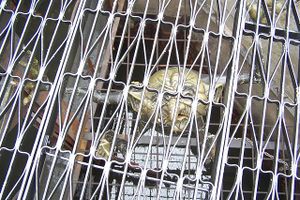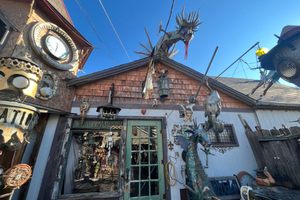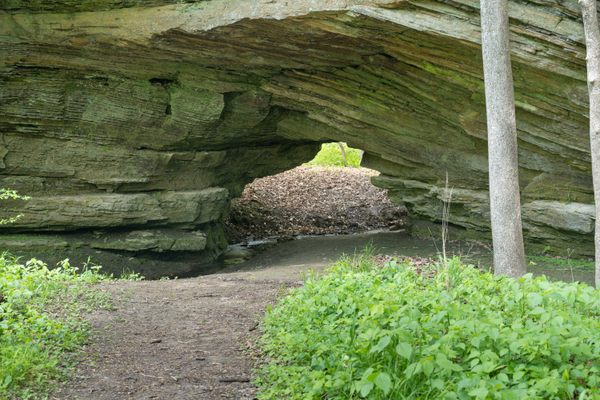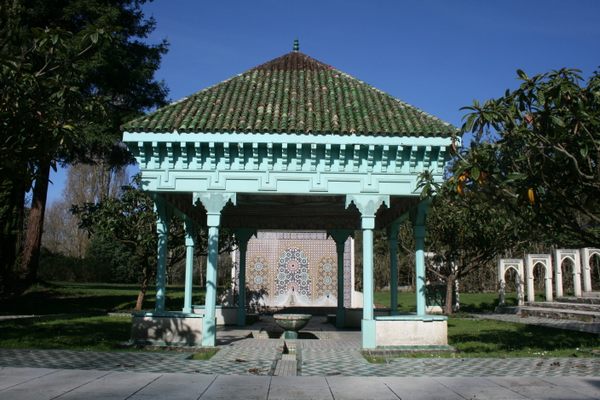About
The artist who created the symbol of the city of Wichita—the 44-foot sculpture known as Keeper of the Plains—had only a few years to appreciate what his monumental work meant for his adopted city. Blackbear Bosin, the renowned Kiowa-Comanche artist, died in 1980, a brief six years after his iconic sculpture was given to Wichita in 1974.
Sitting atop a 30-foot stone promontory, Keeper of the Plains rises a full 74 feet above the union of two rivers: the Arkansas and the Little Arkansas, and is the center-piece of the Mid-American All-Indian Center and Park. It has come to represent the largest city in Kansas, and was also adopted for a time by a flying unit at nearby McConnell Air Force Base, where an image of the sculpture emblazoned the sides of giant Boeing Stratotankers.
The sculpture is forged from weathering steel, and stands at the eastern tip of the park. Two bow and arrow inspired pedestrian bridges provide access to the spot, and there are nightly (weather and river levels permitting) ceremonial Rings of Fire that light the statue and the surrounding landscape.
In addition to his work as a fine artist, Bosin—the grandson of a Kiowa chief—was a veteran of World War II, and a commercial artist as well. His designs, sculptures and paintings are in several prominent public spaces, and are much sought-after by collectors. But it is his steel Keeper, designed, installed and gifted to commemorate the U.S. Bicentennial, that he created to represent a brotherhood of all Native Americans, and the confluence of all the communities of the Plains.
Related Tags
Know Before You Go
Keeper of the Plains statue is at the eastern point of the park at the Mid-American All-Indian Center, where the Little Arkansas River meets the Arkansas River. Entrance to the park for cars is off N. Seneca Street, and by footbridge across the Rivers.
The park is free and open to the public all year (closed between the hours of midnight and 5am). The Ring of Fire burns for 15 minutes each evening, during daylight savings time at 9pm, and during standard time at 7pm. The lighting of the flame is dependent on weather conditions, as well as the level of the rivers.
Published
August 22, 2016




























































